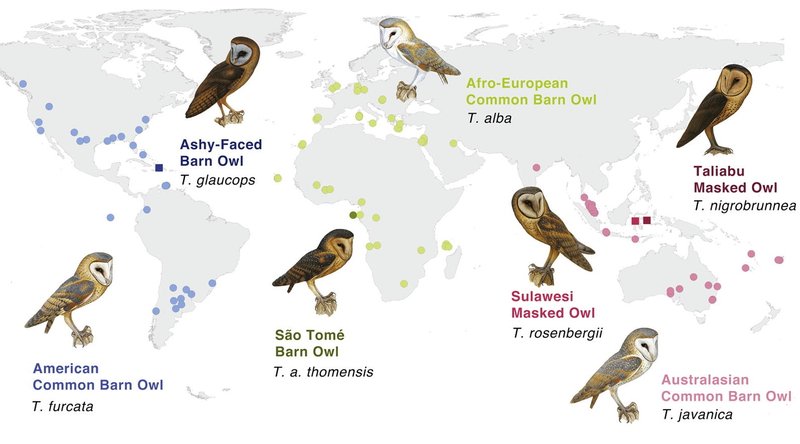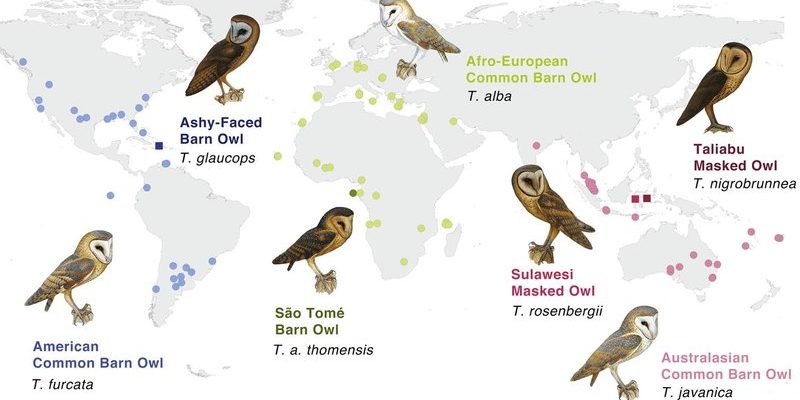
Imagine for a moment that we’re on a journey through time, exploring the rich tapestry of the barn owl’s history. From its early ancestors to its role in modern ecosystems, you’ll discover how this bird has evolved and adapted to thrive in a variety of environments. The barn owl’s story is not just about its survival; it’s about its relationship with humans and the ecological roles it plays. Let’s dive into this intriguing narrative and find out what makes the barn owl so special.
The Origins of Barn Owls
The barn owl, or *Tyto alba*, belongs to a family of owls known as Tytonidae. Its ancestors can be traced back over 30 million years, during a time when the Earth was a much different place. Early owls adapted to various habitats, from woodlands to grasslands. At this point, you might be wondering, what did they look like? Well, think of a more robust and less specialized version of today’s barn owl, with varied plumage that helped them blend into their surroundings.
The evolution of the barn owl as we know it started about 2 million years ago, during the Pleistocene epoch. This was a time when the earth experienced drastic climate changes, leading to the creation of diverse ecosystems. These shifts allowed the barn owl to adapt and spread across the globe, reaching regions in Europe, Africa, Asia, and the Americas. They became proficient hunters, mainly feeding on small mammals like mice and voles, which contributed to their survival.
Interestingly, the barn owl’s unique hunting skills are tied to its evolution. Unlike other owls, barn owls have exceptional hearing that allows them to locate prey even in total darkness. Their asymmetrical ear placement helps them pinpoint sounds accurately. Amazing, right? This adaptation has made them highly efficient hunters, leading to their success in various habitats.
Physical Characteristics
Barn owls are striking in appearance, and their looks play a big role in their identity. Their distinctive heart-shaped face isn’t just for show. It helps funnel sound to their ears, enhancing their already impressive hearing. The feathers are typically a mottled mix of brown, white, and gray—perfect for camouflage in their natural habitat.
One notable feature of the barn owl is its silent flight. The structure of their feathers helps reduce noise while they fly, allowing them to swoop down on unsuspecting prey almost undetected. You might find it fascinating that the barn owl’s wings are longer and broader compared to other owls, which contributes to their ability to glide silently through the night. This adaptation further underscores their proficiency as hunters.
Another characteristic is their size; barn owls typically range from 12 to 24 inches in height, with a wingspan of 31 to 37 inches. This makes them one of the larger owl species, although their weight can vary significantly. They generally weigh between 1.5 to 2.5 pounds, which is relatively light for their size. Their lightweight structure aids in their aerial agility.
Habitat and Distribution
Barn owls are incredibly adaptable and can thrive in a variety of habitats, from open fields to urban areas. They prefer areas with good hunting ground, such as farmland, grasslands, and even abandoned buildings. You might be surprised to learn that these birds have found a cozy niche in many human-populated spaces.
The barn owl is considered a cosmopolitan species, meaning it can be found on every continent except Antarctica. Their ability to adapt to different environments has helped them survive and even flourish in changing landscapes. But, perhaps the most interesting aspect of their distribution is how they’ve interacted with humans over the years.
Farmers often welcome barn owls into their barns and fields because they are excellent natural pest controllers. When you think about it, having these birds around can help reduce rodent populations, which is beneficial for crops and livestock. It’s a win-win situation! But with habitat destruction and agricultural changes, some barn owl populations have faced serious challenges in certain regions.
Ecological Role
The barn owl plays a vital role in the ecosystem. As a top predator, it helps maintain the balance of small mammal populations. By keeping the numbers of rodents in check, barn owls contribute to healthier ecosystems and agricultural sustainability. Honestly, they’re nature’s little pest control agents!
Their hunting methods are fascinating too. Barn owls primarily hunt at night, using their acute sense of hearing combined with excellent night vision to catch prey. They usually swoop down from a perch or glide silently just above the ground before striking. This stealthy approach not only ensures their success but also minimizes disturbance to the environment.
In addition to their direct impact on prey populations, barn owls also influence the behavior of their prey. The mere presence of these skilled hunters can cause rodents to change their foraging habits. So, the next time you see a barn owl in the wild, remember it’s not just a beautiful bird; it’s an integral part of its habitat.
Conservation Status
Despite their adaptability, barn owls face several threats today. Habitat loss due to farming practices, urban development, and climate change has significantly impacted their populations. In some areas, barn owls have become less common, while in others, they struggle just to survive.
Conservation efforts have been put in place to help protect barn owls and their habitats. Organizations are working to restore natural areas and create awareness about the importance of these birds. Building nesting boxes is also a popular way to encourage barn owl populations in farming regions. These boxes provide safe nesting sites and can help the owls thrive despite habitat changes.
It’s essential to recognize the role we all play in conserving these magnificent creatures. If you live in an area where barn owls are found, you can contribute by creating a welcoming environment. This can include maintaining natural habitats and reducing pesticide use, which can harm not only barn owls but other wildlife too.
The Fascination with Barn Owls
Barn owls have captivated humans for centuries, appearing in folklore, literature, and art. Their mysterious nature and ethereal appearance make them a symbol of wisdom and intuition in many cultures. People often find them enchanting, and their presence brings a sense of magic to the night.
In recent years, there’s been a surge of interest in barn owls as pets. While they can be beautiful companions, it’s important to remember that they are wild animals with specific needs. Keeping a barn owl requires a deep understanding of their behavior, diet, and habitat needs. It’s essential to prioritize their well-being and ensure they live fulfilling lives—whether in the wild or under human care.
Whether you’re a seasoned nature enthusiast or simply someone who enjoys the beauty of wildlife, barn owls offer an intriguing glimpse into nature’s wonders. Their history, evolution, and role in our world make them a compelling subject for anyone interested in the natural world.
The barn owl’s evolution and history are a testament to the resilience and adaptability of nature. From their unique adaptations that enhance survival to their essential role in maintaining ecological balance, these birds remind us of the interconnectedness of life. As you reflect on the journey of the barn owl, consider the steps you can take to support their conservation.
Whether it’s advocating for wildlife-friendly practices, engaging in local conservation efforts, or simply appreciating these magnificent creatures from afar, every effort counts. The story of the barn owl is ongoing, and together, we can ensure that this remarkable species continues to thrive for generations to come.

